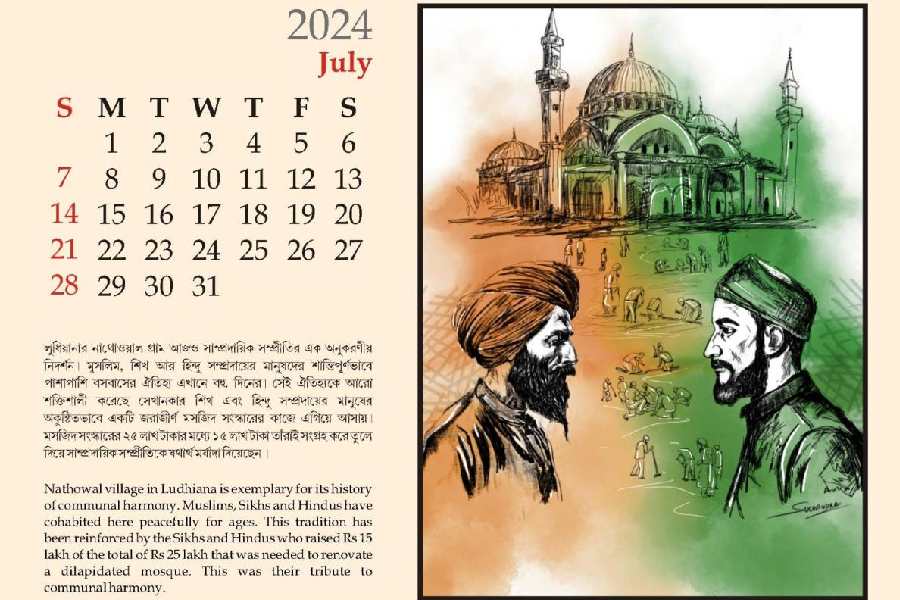The forces of division drown out the quieter strains of togetherness. As a protest against these forces, a calendar for the coming year has portrayed 12 stories of harmony among communities, one on each of its pages. That these stories are taken from newspapers indicates that hostility has not overcome everyday life. The makers of the calendar have chosen, for instance, incidents from the Delhi riots and the citizens’ registration exercise in Assam to illustrate that compassion brings people together irrespective of religion. With one page illustrating the legend of Bonbibi of the Sunderbans, they have also shown that the traditional cultural syncretism remains unchanged. Another page shows that funds raised by Sikhs and Hindus helped renovate a village mosque in 2015; it exemplifies the kind of neighbourliness unique to India that is now under serious threat. It is a calendar with a message of hope, a dream of harmony.
Messages in calendar art are not new: through images and icons, illustrations and landscapes, modern calendars often sought to disseminate ideas — sometimes ideals — among the public thronging the marketplace. When Raja Ravi Verma first founded his lithograph press, his wish was to bring art to the people, to the bazaar, so that they would be able to make familiar, indigenous themes — not Western ones — part of their everyday lives through art. Inevitably, the first themes were drawn from myths, legends, epics and tales of gods and goddesses. That impulse remains in force even today, although the popular calendar that hangs on the walls of homes in city, town and village, in the rundown office or the stuffy shop, has lost its touch with art in its mass-produced form. It took a while for the calendar to take on other cultural and religious themes besides the dominant one, and such self-consciousness gave birth to a kind of cultural and aesthetic enrichment that images of film stars and fashion models, rain-soaked women, fat little babies, slick company productions advertising their activities and products or portraits of great leaders could not provide.
The struggle for independence was a critical time; it provided a spur to the calendar with a message. Many feel that this, too, is a critical time. The makers of the 2024 calendar with portrayals of harmony searched for what one of them called snippets of hope amid the pool of hatred. The image is a bleak one, but what is perhaps more worrying is the gradual disappearance of the calendar from walls and desks. All information is available online at a touch. Those who still refer to the wall calendar may not have access to this reminder of amity and friendship with its limited print-run and high price. Yet this is a message important to all in a time of suspicion and hostility and, although it will not reach the bazaar, this calendar is a reminder that protest will always find a way to express itself.










